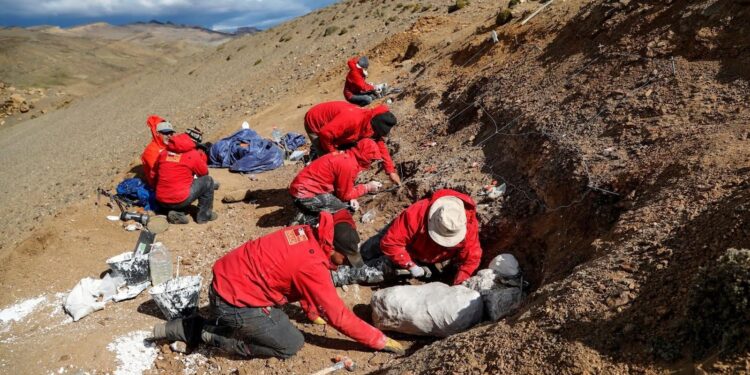Researchers announced the discovery of a species of herbivorous dinosaur called “Gonkoken nanoi” in Chilean Patagonia, an area that has been the scene of important paleontological discoveries in recent years. This dinosaur, of which there are no records in the southern hemisphere, lived 72 million years ago in the Las Chinas valley, near Cerro Guido, in the extreme south of Chile. It is a dinosaur up to four meters long, weighing one ton, and with a beak similar to that of a duck.
The remains of this species were found in 2013, and scientists were able to classify them later. These dinosaurs are described as slender animals that could adopt both a bipedal and quadrupedal posture to reach vegetation at different heights. They had large, flat beaks similar to those of a duck but with sharper edges, and they possessed numerous teeth that allowed them to grind, crush, and cut any type of plant material, including wood. In addition, it is believed that they had social behavior and cared for their young.
The discovery of the remains in the Las Chinas river valley, near the Torres del Paine National Park, reveals that Chilean Patagonia was a refuge for ancient species of hadrosaurs, which migrated to the southern hemisphere long before other more advanced forms and may have even reached Antarctica. The presence of this species in such a remote location is surprising since it implies large extensions and marine barriers that block the passage of most terrestrial species.
This discovery is the first of its kind in the southern hemisphere and marks the fifth dinosaur species discovered in Chile, after “Chilesaurus diegosuarezi,” “Atacamatitan chilensis,” “Arackar licanantay” and “Stegouros elengassen” all found in the same area. The name “Gonkoken” comes from the language of the southern Tehuelches, a native people that inhabited the region until the end of the 19th century, and means “similar to a wild duck or swan.” The term “nanoi” is used in recognition of a former ranch hand from the Las Chinas ranch who collaborated in the research and was nicknamed “Nano.”










